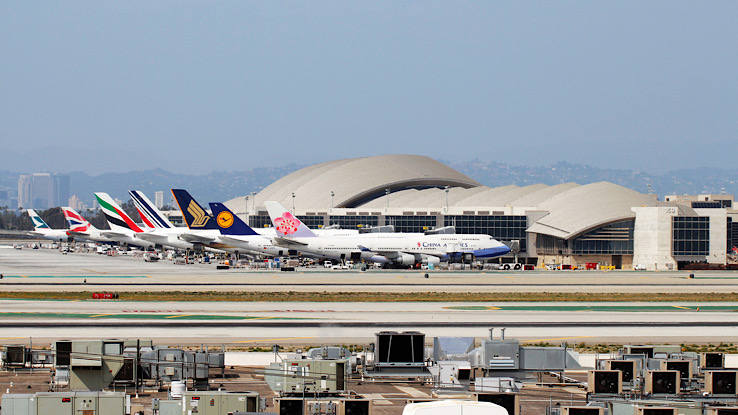
The rate of carbon in the atmosphere has increased dramatically since the beginning of the industrial revolution. The problem with this is that the effects of this increase pose risks to life on the planet. In response to the growing threats of climate change, there has been global action to reduce carbon dioxide emissions through carbon offsetting. If you want to understand this concept better, here’s a guide to help you.
What Is Carbon Offsetting?
Carbon offsetting is a process in which individuals or organizations make efforts to reduce carbon emissions of specific activities such as a single flight or a portion of the carbon produced by a business in a certain period.
So what is a carbon offset program? A carbon offset program works by supporting initiatives that focus on reducing carbon emissions, increasing carbon storage, or both.
For example, you may wish to offset the carbon emissions from a flight by investing in tree planting projects. In this example, the net effect of carbon emissions in the atmosphere would be zero if the tree planting program stores (removes from the atmosphere) the same amount of carbon emissions as your flight.
Why Is Carbon So Bad?
Carbon is one of two elements that make up carbon dioxide, the most common greenhouse gas by volume. CO2 accounted for about 80% of the total emissions of all greenhouse gasses in the U.S. in 2017.
Now, why are greenhouse gas emissions so harmful? It’s because they have many adverse health and environmental effects. Increased carbon emissions can cause respiratory problems, high blood pressure, or headaches from a health perspective. And the environmental impacts include increased extreme weather events, changes in rainfall patterns, water shortages, increased wildfires, and food shortages. And humans are the leading source of greenhouse gas emissions.
What Is the Travel Industry Doing?

According to the U.S. Environmental Protection Agency (EPA), the transportation industry accounted for 27% of greenhouse gasses emission in 2020, making it the highest of any industry.
In response, the travel industry is pushing to reduce its carbon footprint. And globally, more people are seeking ways to reduce their environmental impact. Some jurisdictions even offer tax incentives on contributions to registered charities that conduct activities to reduce our carbon footprint.
If you want to do your part, you can pay to offset your carbon emissions from your flight with British Airways or Aer Lingus through low-carbon, renewable energy, or energy efficiency programs in Africa and the U.K.
Airlines Carbon Offsetting
British Airways and Aer Lingus have partnered with Pure LeapFrog. Customers can enter their flight details on the Pure Leapfrog page, select their preferred project, and pay to offset their carbon emissions.
Air France is also offsetting domestic flights since 2020 through a partnership with A Tree for You. This partnership brings together donors and tree planting projects all over the world. Travelers can offset their carbon emissions by contributing to tree planting projects that capture atmospheric carbon over their lifetime. Other airlines that offer carbon offsetting programs include Air New Zealand, American Airlines, and Cathay Pacific.
Cruise Lines Carbon Offsetting
The same movement is happening in the cruise industry. For example, by using blue carbon credits, MSC Cruises’ fleet became the world’s first major carbon-neutral cruise line in 2020. Blue carbon credits represent the conservation and growth of carbon-absorbing plants like mangrove forests. Other companies like Norwegian Cruise Line and Royal Caribbean Cruises have followed suit.
What Can You Do?
Although the travel industry has been working to reduce its total carbon footprint, there are many things individuals can do to further reduce the carbon footprint caused by traveling.
You may think carbon offsetting is a complicated process, but thanks to technology, you can do this in just a few simple clicks.
Before you offset your carbon footprint, you must first calculate the amount of emissions you are responsible for.
How To Calculate Your Carbon Footprint
To understand your carbon footprint, you need to first understand how to measure it.
A low carbon footprint is anywhere between 6,000 to 15,999 pounds per year. But, the average carbon footprint of a person is 16,000 to 22,000. Here’s how to calculate your carbon footprint.
- Average electric bill multiplied by 105
- Average gas bill multiplied by 105
- Monthly oil bill multiplied by 113
- Total yearly mileage on your car multiplied by .79
- Number of flights you’ve taken in the past year (that are 4 hours or less) multiplied by 1,100
- Number of flights you’ve taken in the past year (that are 4 hours or more) multiplied by 4,400
- If you do not recycle newspaper, add 184
- If you do not recycle tin or aluminum, add 166
The sum of everything is your total carbon footprint, measured in pounds for the year.
How To Calculate Carbon Offset Amounts for Flights
Several calculators were created to measure the amount of carbon dioxide produced during a flight. A common method simply uses the number of miles flown. Better carbon offset systems also consider the class of travel, the aircraft type, the efficiency of fuel, the number of flight passengers, and the occupancy rate.
However, if you want to be more precise, you need to factor in the weather condition and time of day, impacting fuel consumption. Every scheme works differently, and some are far more thorough than others.
Carbon Offsetting vs Carbon Credits
After calculating the amount of carbon you wish to offset, you can look for companies that offer carbon offsetting and purchase carbon credits. These terms are often used interchangeably but actually have slightly different meanings.
Carbon Offset
A carbon offset is a reduction in carbon emissions or an increase in carbon storage that compensates for carbon emissions produced elsewhere. So an example would be to pay for tree planting to offset the carbon emissions produced from a flight.
The offset refers to the fact that there is no net overall harm to the environment, as one activity adds carbon to the atmosphere while the other removes carbon from the atmosphere.
Carbon Offset Credit
A carbon offset credit is something you can transfer to another person or organization that is certified by governments or other credible institutions. It represents a reduction in carbon emissions of one metric ton. So it is like carbon currency in that it allows someone to buy a carbon offset credit and “retire” it by claiming its benefit and reducing the purchaser’s carbon emissions.
What Comes Next?
There are many easy steps you can take to reduce your carbon footprint. You can:
- Reduce your carbon footprint through the mode of transportation you choose
- Choose to walk whenever possible rather than using motorized transportation
- Car share with others to work or while visiting tourist attractions
- Choose local products over important options
- Reduce the amount of meat in your diet
- Reuse plastic bags and recycle whenever possible
The Takeaway
Carbon offsetting is not just a trend; it’s a concept you can use to reduce your carbon footprint and, in turn, help the environment.
As more people look into carbon offsetting, the more carbon dioxide can be removed from the atmosphere. This can help slow the rate of climate change and reduce the number of people affected by increased levels of greenhouse gasses in the atmosphere.
Carbon offsetting may be a part of a bigger solution that includes looking for better energy alternative sources. All companies and travelers need to learn more about carbon offsetting and other efforts to reduce their carbon impact.






